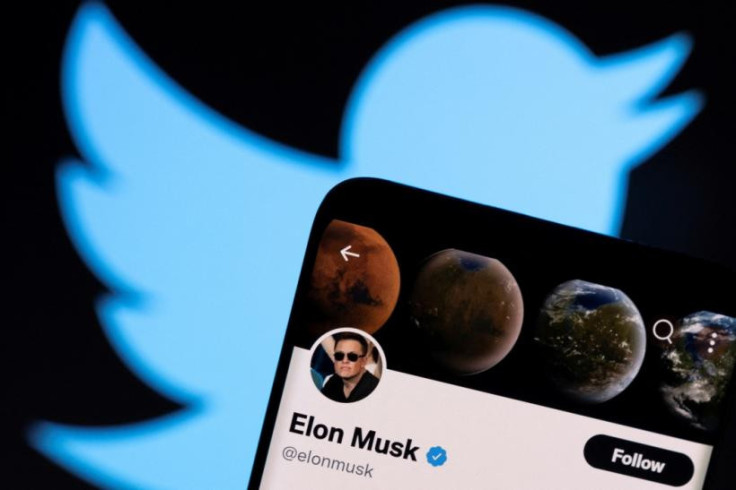In two months of the full-scale war, russia has committed 243 crimes against journalists and the media in Ukraine.
This is according to the monitoring conducted by the Institute of Mass Information.
As of April 24, seven journalists were killed while carrying out their professional duty, nine were injured, and at least 15 are missing.
IMI has documented eight cases of journalists being captured and abducted by russians. In these cases, at least nine journalists were taken hostage. Most of them have already been released, but the fate of one of the journalists, Dmytro Khylyuk, who disappeared in Kyiv region, is still unknown. Colleagues had some intelligence about him being taken hostage; however, the region had already been liberated from the occupants, yet nothing is known about the journalist's whereabouts.
In addition, the fate of at least 14 journalists from Mariupol also remains unknown. IMI is currently unable to verify what happened to our colleagues, so we consider them missing.
The list of russian crimes also includes shelling, threats, harassment of journalists, shelling and seizure of TV towers, hacking attacks on Ukrainian media websites, shelling of media offices, shutting down Ukrainian broadcasting, blocking access to Ukrainian media websites in russia and the occupied Crimea. In addition, at least 106 regional media outlets were forced to cease their work due to threats from the russian occupants, seizure of offices, inability to work under temporary occupation and print newspapers, etc.
Seven journalists have been killed while carrying out their duties in Kyiv and its suburbs in the two months since russia's full-scale invasion of Ukraine. Among them are three Ukrainian journalists and four foreign ones, five men and two women. Namely:
- Yevhen Sakun, LIVE channel cameraman (deceased on March 1 in a russian missile strike on a TV tower in Kyiv);
- Brent Renaud, documentarist and The Times correspondent (shot by russians on March 13 at a checkpoint in Irpin);
- Pierre Zakrzewski, Fox News cameraman, Irish citizen (deceased on March 14 in a russian shelling attack on Horenka village, Kyiv region);
- Oleksandra Kuvshynova, Ukrainian fixer and journalist (deceased on March 14 together with Pierre Zakrzewski in a russian shelling attack on Horenka village, Kyiv region);
- Oksana Baulina, journalist working for the russian The Insider, Alexei Navalny's Anti-Corruption Foundation (deceased on March 23 under russian artillery fire in Kyiv while carrying out an editorial assignment);
- Maxim Levin, photo reporter, war correspondent, had worked for many international agencies and Ukrainian media (went missing on March 13, found murdered on April 1);
- Mantas Kvedaravicius, Lithuanian filmmaker and documentarist (killed in Mariupol).
Another 14 journalists were killed as combatants or as a result of russian shelling, not while performing their journalist duties.
- Oleksandr Lytkin, "КNК Мedia" journalist, deceased on February 13 in a shelling attack on Romanivka village by russian troops.
- Dilerbek Shakirov, civillian journalist working for "Navkolo tebe" informational weekly, shot from an automatic rifle on February 26 in Kherson suburbs;
- Serhiy Pushchenko, graphic artist and painter, culturologist, Honored Artist of Ukraine, National Journalist Union of Ukraine member, award-winning journalist, volunteer and ATO veteran, killed on March 2 in Vasylkiv together with his territorial defence comrades;
- Viktor Dudar, war journalist, deceased on March 6 in a battle with russian invaders near Mykolaiv;
- Pavlo Li, actor, "Dom" channel host, joined territorial defence forces at the beginning of the war, deceased on March 6 near Irpin while helping evacuate civillians;
- Viktor Dedov, "Sigma" channel cameraman, killed on March 11 in Mariupol as a result of a shelling attack on a building;
- Oleh Yakunin, Zaporizhzhia misto.zp.ua website editor, deceased on March 18 defending Ukraine from russian invaders;
- Lilia Humyanova, journalism tutor and the head of the art department of Livoberezhny District House of Children's and Youth Creativity, killed on March 19 in a russian shelling attack on Mariupol;
- Yurii Oliynyk, Channel 24 cameraman, deceased on March 23 in a battle near Popasna village, Luhansk region;
- Serhiy Zaikovskyy, essayist, historian, translator, deceased on March 24 in a battle with russian invaders near Kyiv;
- Denys Kotenko, Ministry of Veterans Affairs press office employee, deceased on March 24 in a battle with russian invaders near Kyiv;
- Yevhen Bal, journalist, author, volunteer, died under torture at the hands of russian troops on April 2 in Mariupol;
- Roman Nezhyborets, Chernihiv's "Dytynets" channel video engineer, killed by russian troops in April in Yahidna village near Chernihiv;
- Zoreslav Zamoiskyy, body with signs of violent death found on April 13 in Bucha.
At least nine journalists have been injured in the russian invaders' shelling attacks in Kyiv, Sumy, Mykolayiv, and Chernihiv regions:
- Stefan Weichert, journalist for the Danish Esktra-Bladet (wounded on February 26 when their car came under fire in Okhtyrka, Sumy region);
- Emil Filtenborg Mikkelsen, journalist for the Danish Esktra-Bladet (wounded on February 26 when their car came under fire in Okhtyrka, Sumy region);
- Stuart Ramsay, correspondent for the British Sky News (wounded by russian troops' gunfire in Bucha, Kyiv region, on February 28. The channel's cameraman Richie Mockler was saved by his bulletproof vest);
- Guillaume Briquet, Swiss journalist (wounded in Mykolaiv region on March 6 as the car he was in came under russian gunfire. He was also robbed. The occupants could clearly see "PRESS" sign on the car);
- Maryan Kushnir, Radio Liberty correspondent (wounded in a missile strike on March 11 near Kyiv);
- Juan Diego Herrera Arredondo, American journalist (wounded in a russian shelling attack on March 13 in Irpin near Kyiv);
- Benjamin Hall, journalist for the American Fox News (hospitalised with a severe wound he took on March 14 while working on a report near Kyiv);
- Andrii Tsaplienko, journalist for "TSN.Tyzhden," 1+1 channel (received a shrapnel wound on March 24 as russians fired at a civillian convoy in Chernihiv region);
- Oleksandr Navrotskyy, cameraman (received a severe leg wound on March 26 while filming during a "Grad" shelling attack in Kyiv region).
IMI has recorded eight cases of capturing and abduction of journalists by the russian invaders. These cases have occurred in the temporarily occupied territories of Zaporizhzhia (Melitopol) and Kherson (Nova Kakhovka) regions. Namely, these are the abduction of journalists and the publisher of "Melitopolski Vidomosti" newspaper and taking the father of RIA-Melitopol journalist Svitlana Zalizetska, as well as Nova Kakhovka journalists Oleh Baturyn and Oleksandr Hunko, hostage.
The russian occupants have shelled 11 TV towers in eight regions of Ukraine: Melitopol (Zaporizhzhia region), Kyiv and Vinarivka village (Kyiv region), Kharkiv (hit the TV tower twice) and the region (Izyum), Rivne, Vinnytsia, Korosten (Zhytomyr region), Lysychansk (Luhansk region), Bilopillya (Sumy region). As a result of russian air strikes, Ukrainian broadcasting has completely or partially disappeared in these regions.
In addition, the occupants have seized Ukrainian media offices and switched the broadcasting to russian channels. In particular, the russian invaders forcibly shut Kherson and Melitopol off from Ukrainian broadcasting, and mined Suspilne's building in Kherson.
IMI has also recorded numerous DDoS attacks on the websites of Ukrainian online media and NGOs covering russia's war against Ukraine. Media websites have been hacked, news reports edited, russian symbols or calls to surrender posted. Namely, the attacks were targeting the websites of Suspilne, NV, Channel 5, "Babel," Lutsk website "Konkurent," "Poltavska Khvylya" media, the website of Kherson's "Novy den" newspaper, Minfin.com.ua financial periodical, the Kherson edition MOST, TV channel websites "Espresso," "Detector Media," etc. In addition, IMI recorded phishing attacks on Ukrainian media offices and journalists.
Since the end of March, IMI has recorded threats being sent to Ukrainian media outlets and journalists via email. The threatening letters came from the russian mail.ru service, signed by various users. Journalists have been threatened with interrogation, torture, and incarceration, and were even sent rhymed threats later. Such letters have been received by the editorial offices of European Pravda, Hlavkom, Apostrof, Krym.Realii, Zaporizhzhia city website 061.ua, and a number of Volyn and Zaporizhzhia media outlets.
russian crimes against journalists and the media have been recorded in 16 regions of Ukraine. russia has committed the most crimes in Kyiv and Kyiv region (murder, wounding, disappearances, abductions, shelling of journalists and TV towers, threats, cybercrimes). Then come Zaporizhzhia and Kherson: some cities in these regions are occupied by the russian army; there have been cases of abductions, shooting on journalists, threats, cybercrimes, seizure of media offices and the shutdown of Ukrainian broadcasting. Many Ukrainian editorial offices have been with interruptions due to sirens and shelling throughout Ukraine.
CONTINUE READING
243 crimes against journalists and the media in Ukraine committed by russia in two months of war | Institute of Mass Information (imi.org.ua)






/cdn.vox-cdn.com/uploads/chorus_image/image/70792501/acastro_211129_4896_0001.5.jpg)








